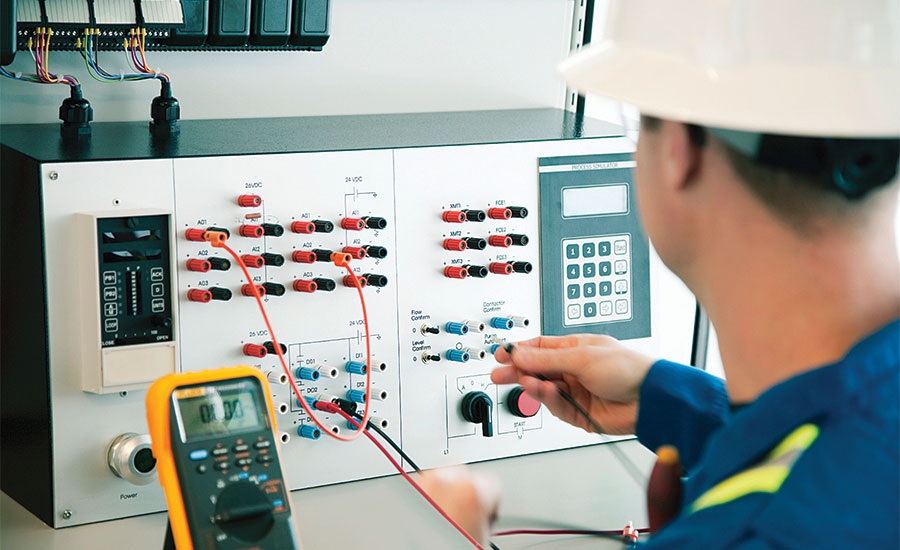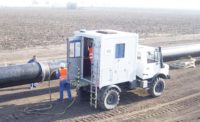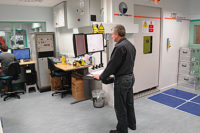The importance of nondestructive testing training cannot be overstated. What nondestructive testing technicians do every day has a huge impact on the lives around them. Well trained and qualified technicians provide accurate results for prevention of failures in components or structures. I always say, “You never hear about the pipeline that didn’t leak, the bridge that didn’t collapse, or the plane that landed safely a thousand times, but that’s what NDT does, NDT makes the world a safer place.”
There are many things to consider when developing an NDT training curriculum. Governing codes, standards, and site specific requirements all play a role in curriculum development. Having spent years in the NDT field as a Level II technician, an API inspector, and now in my role as the CEO of the American Institute of Nondestructive Testing, I can attest to the importance of a quality NDT training curriculum.
NDT training requirements are broken into two different categories: “formal education or training hours” and “minimum work experience hours or on the job training hours (OJT).”
These two categories differ for each NDT method and vary according to which practice or standard the employer chooses to follow, i.e. ASNT-TC-1A, ANSI/ASNT CP 189, NAS 410, etc.
I firmly believe in this two-part training system. The required formal education or training hours focus on the theory and application of the NDT method being taught, i.e. manufacturing processes, discontinuities related to those processes, inspection techniques and many other topics. A strong understanding of theory is the foundation on which a trainee will build competence while completing his or her required work experience or on the job training hours.
Every employer has different needs when it comes to the examinations they perform on a day to day basis. Needs differ depending on the type of equipment they are performing examinations on (new construction pipeline, pipeline integrity, structural, refinery, oil and gas, pulp paper, nuclear, above the ground storage tanks, or pressure vessels, etc.), governing codes, clients’ requirements, etc. The one thing that does not vary is the need for well trained, qualified personnel to perform these examinations.
Employers’ specific needs are what should drive the work experience or on the job training outline. I believe that every employer should have a “competency checklist” of tasks related to their specific needs. This checklist should be thoroughly explained to the trainee, and milestones and expectations set as to when they are expected to be competent in each of these tasks. This not only helps the trainee focus on what is expected, it also helps the employer track a trainee’s progress and identify the areas where additional mentoring may be needed. This checklist will also give direction to the individual tasked with the responsibility of properly training their trainee or assistant.
One of the more widely used documents for developing an NDT training curriculum is ANSI/ASNT CP-105, ASNT Standard Topical Outlines for Qualification of Nondestructive Testing Personnel. What is the scope of CP-105? As stated in the document: “This standard establishes the minimum topical outline requirements for the qualification of nondestructive testing (NDT) personnel.” Although CP-105 establishes minimum topical outline requirements, it also allows for these topics to be expanded upon, or removed altogether to help meet the employers’ specific NDT needs or for use in creating limited certifications, unless the applicable certification procedure or written practice states otherwise.

Every employer has different needs when it comes to the examinations they perform on a day to day basis.
Training requirements are outlined in a company’s written practice or in an addendum to it. What is a written practice? Companies performing NDT inspections for either in-house examinations or as an NDT service company shall have a written practice which contains information on training requirements and certification requirements of NDT personnel. Included in the written practice shall be the minimum required formal education hours per NDT method, the required on the job training hours per each individual NDT method, examinations and experience requirements for certification of NDT personnel, as well as other important information.
A written practice is prepared based on one or more of the following documents: ASNT’s Recommended Practice SNT-TC-1A Personnel Qualification and Certification in Nondestructive Testing, ANSI/ASNT CP-189 Standard Topical Outlines for Qualification of Nondestructive Testing Personnel, ISO 9712 Non-destructive testing – Qualification and certification of NDT personnel, and Aerospace Industries Association’s Standard NAS 410 NAS Certification and Qualification of Nondestructive Test Personnel, among others.
SNT-TC-1A is a “recommended practice,” which means it is used as a “guideline” or “general framework” for an NDT qualification and certification program. SNT-TC-1A provides recommended educational, on the job training experience requirements for the various methods of NDT. It is not intended to be used as a strict specification. It was created to give guidance to the employer as well as flexibility when creating a written practice to meet the specific needs of each company. Generally speaking SNT-TC-1A contains the verb “should” to reinforce the document’s role as a “recommended practice.” Once the employer chooses which recommended practices best fit with their company’s needs, or they modify these recommendations to more closely align with their specific NDT needs, the employer must specify these in their written practice document. The verb “should” must be replaced with “shall” in your written practice.
ANSI/ASNT CP-189 is a “standard.” What is the scope of CP-189? As stated in the document: “This standard establishes the minimum requirements for the qualification and certification of nondestructive testing (NDT) and predictive maintenance (PdM) personnel.”
CP-189 sets minimum requirements; there are no recommendations in this document. Some of the requirements contained in this document are as follows: levels of qualification, qualification requirements, qualification and certification, examinations, record keeping, as well as expiration, suspension, revocation, and reinstatement of employer certification, etc.
ISO 9712 Non-destructive Testing – Qualification and Certification of NDT Personnel is also a “standard.” What is the scope of ISO 9712? As stated in the document: “This International Standard specifies requirements for principles for the qualification and certification of personnel who perform industrial non-destructive testing (NDT).” ISO 9712 contains many of the same or similar requirements that can be found in CP 189, but has many of its own requirements as well.
NAS410 NAS Certification and Qualification of Nondestructive Test Personnel is also a “standard” practice. What is the scope of NAS 410? As stated in the document: “This standard establishes the minimum requirements for the qualification and certification of personnel performing nondestructive testing (NDT), nondestructive inspection (NDI), or nondestructive evaluation (NDE) in the aerospace manufacturing, service, maintenance, and overhaul industries.” As with the other mentioned NDT related standards, NAS 410 contains many of the same or similar requirements but contains its own unique requirements as well.
There are many variables to consider when developing an NDT training program. Just remember that nothing can replace a well thought out curriculum, followed by an organized mentoring program, and coupled with a passion for education and training.
References
- ANSI/ASNT CP-105-2016, Topical Outlines for Qualification of Nondestructive Testing Personnel, 2016 Edition
- ASNT-TC-1A, Personnel Qualification and Certification in Nondestructive Testing, 2016 Edition
- ANSI/ASNT CP-189-2016, ASNT Standard for Qualification and Certification of Nondestructive Testing Personnel, 2016 Edition
- ISO 9712:2012, Non-Destructive Testing-Qualification and Certification of NDT Personnel, 2012 Edition
- NAS 410, NAS Certification and Qualification of Nondestructive Test Personnel, 2014 Edition



